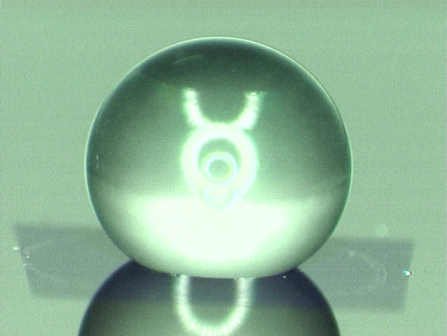Yamaguchi Laboratory
Faculty of Textile of Science & Technology, Department of Machinery & Robotics, Course of Bioengineering
Graduate School of Science & Technology, Department of Biomedical Engineering (Master's Course)
Interdisciplinary Graduate School of Medicine, Science & Technology, Department of Biomedical Engineering (Doctor's Course)
Research

Our laboratory has been exploring a new research field, biological measurement by analyzing salivary samples with "human" and "noninvasive" and "biosensor" as three research key words. Noninvasive biological measurement, using a variety of information obtained painlessly from the human body, is a technology to maintain human health and is used for medical diagnosis and treatment. Furthermore, our lab is also researching another technology that can physically control both the hydrophilic and hydrophobic properties of material surface as a biometric technology, and a medical support robot that can autonomously obtain or control physical and environmental states.
Biosensor

Portable biosensor for commercial use
By applying engineering solutions to the medical field, we have been investigating a measurement system to obtain biological information that is useful for diagnosis and to assist daily lives. For example, a glucose biosensor that can noninvasively estimate blood glucose levels using glucose levels in gingival crevicular fluid (GCF) has been developed.
Stress & Cancer Research

Visualization of human stress by using salivary α-amylase
Psychosomatic stress caused by various factors has become a social problem. Focusing on salivary α-amylase (SAA), which can be an effective index of sympathetic nerves activity, utilizing a dry chemistry system, a quick, easy-to-use analytical method as a portable device was proposed. In 2007, the SAA biosensor obtained approval as a medical device from the Ministry of Health, Labour and Welfare, Japan.
Biomimetics

Superhydrophobicity expressed by nano-periodic structure
The hydrophobic properties of materials have been chemically added by applying hydrophobic high-polymer materials such as fluorine resins to the surface. However, due to ablation, the effectiveness of the coating cannot be expected over a long duration. Our lab has been investigating physically adding super-hydrophobicity or super-hydrophilicity to the surface by controlling the micro-periodic structure of the surfaces of the materials.
Robotics

Stress-evidence search engine
The study for biological measurement can be used to support both mental care and the physical treatment of disorders. By analyzing biologically collected data and combining the physical and chemical measured results using coupled analysis, we have been investigating medical supporting robotics that can control daily life.
